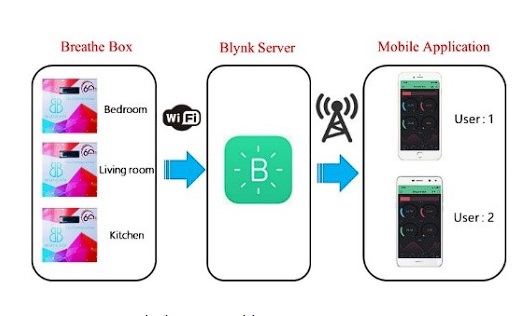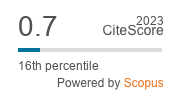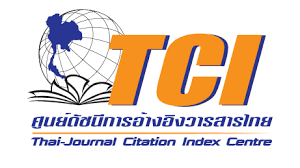Air Pollution Monitoring and Alarming System via Internet of Things
doi: 10.14456/mijet.2019.10
Keywords:
Air Pollution, Dust, Blynk, Breath Box, Internet of ThingsAbstract
Air quality is the most tremendous thing for the life of people. According to a severe situation of air quality in Thailand, air pollution emerges from an internal combustion engine, construction, different transportation, forest fires, industrial production and so on. These lead to a health's problem, especially coronary heart disease and severe acute respiratory syndrome. For this reason, researchers have a notion to apply information technology to monitor and alarm state of air quality in a hazardous area.
Internet of Things (IoT) is a network of smart sensors that can control and monitor things from anywhere over wireless communication and internet. Therefore, this research aims to propose air pollution monitoring and the alarming system powered by the internet of things technology. The smart box has been developed as a prototype to measure the level of air quality, dust, temperature, and humidity. It comprises of two important units including a microcontroller and related sensors. Data from sensors is collected and sent to the IoT cloud server over a wireless network. The Blynk mobile application is used to monitor and display real-time related data through the digital dashboard. Moreover, Blynk application is selected as a real-time notification system to the user provided that air pollution is greater than the standard level.
The research results indicated that the developed smart box and mobile application can monitor and alarm the level of air quality effectively. Also, it is suitable to implement and apply in a smart city for the near future.
References
[2] The Thaiger (2019). URL: https://thethaiger.com/news/bangkok/bangkok-air-quality-bkk-governor-calls-for-help-as-pm2-5-smog-continues, access on 10/04/2019
[3] Tasty, Thailand (2019). URL: https://tastythailand.com/bangkok-air-pollution-at-dangerous-level-in-january-2019/, access on 6/02/2019
[4] NPI (2019). URL: http: //www.npi.gov.au/resource/particulate-matter-pm10-and-pm25, access on 9/04/2019
[5] S. Duangsuwan, A. Takarn, R. Nujankaew and P. Jamjareegulgarn, (2018). A Study of Air Pollution Smart Sensors LPWAN via NB-IoT for Thailand Smart Cities 4.0, 2018 10th International Conference on Knowledge and Smart Technology (KST), Chiang Mai, 2018, pp. 206-209. doi: 10.1109/KST.2018.8426195
[6] M. Alowaidi, A. Karime, M. Aljaafrah and A. E. Saddik, (2018). Empirical study of noise and air quality correlation based on IoT sensory platform approach, 2018 IEEE International Instrumentation and Measurement Technology Conference (I2MTC), Houston, TX, 2018, pp. 1-6. doi: 10.1109/I2MTC.2018.8409629
[7] K. Ashton, (2009). That Internet of Things in the real world, things matter more than ideas, RFID Journal.
[8] Mahmoud Shuker Mahmoud, Auday A. H. Mohamad, (2016). A Study of Efficient Power Consumption Wireless Communication Techniques/Modules for Internet of Things (IoT) Applications. Advances in Internet of Things, Vol.6 No.2.
[9] Node MCU ESP8266. URL: https://www.indiamart.com/proddetail/esp8266-12-ch340-nodemcu-board-serial-wireless-module-19450589197.html
[10] Adafruit (2019). URL: https://learn.adafruit.com/dht/overview, access on 10/04/2019

Downloads
Published
How to Cite
Issue
Section
License
Copyright (c) 2019 Mahasarakham International Journal of Engineering Technology

This work is licensed under a Creative Commons Attribution-NonCommercial-NoDerivatives 4.0 International License.







